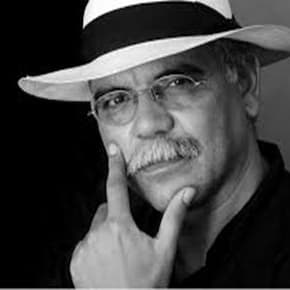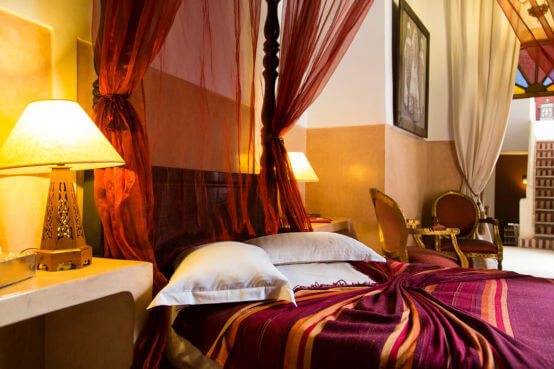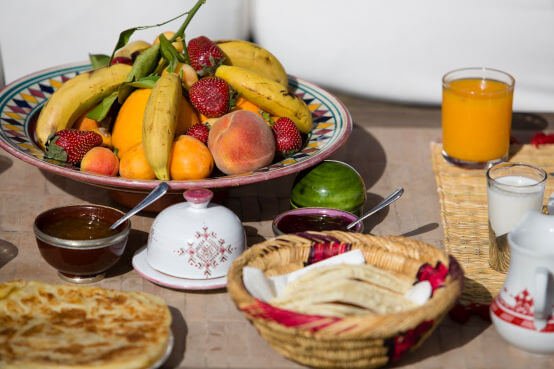Marrakech beckons you to immerse yourself in its history and traditions. Lose yourself in the twists and turns of the souks, haggle for a Berber rug or try your hand at a cooking class. Marrakech rewards those who take the time to discover its hidden corners and fully experience all it has to offer. The ancient Medina sits at the heart of Marrakech, housing a maze of alleyways, atmospheric neighbourhoods, historic places of interest and a plethora of eateries and shops. It’s also where you will find us at the peaceful Riad El Zohar.
When you are visiting a historic destination like Marrakech it’s a good idea to have some understanding of the city’s culture and traditions. We’ve put together a few facts and tips to help you make the most of your stay in this glorious and interesting city.
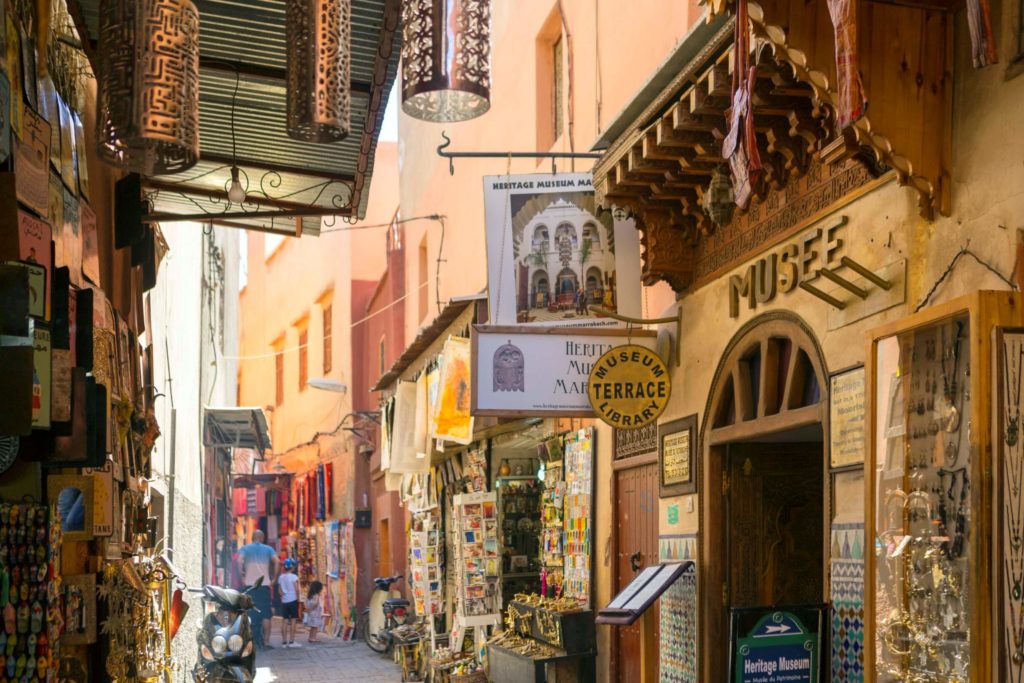
The History of Marrakech
Marrakech’s vibrant culture reflects its long history as a crossroads of civilizations. Founded in 1070 by the Almoravid dynasty, an imperial Berber Muslim people, the city’s origins are firmly rooted in North African Berber traditions. The Almohads, another Berber dynasty, later conquered Marrakech in 1147 and built landmarks like the iconic Koutoubia Mosque.
Over the centuries, Arab, Berber and French influences left their mark through architecture, language, cuisine and customs. The winding alleys of the ancient Medina showcase the city’s Islamic heritage, from ornate madrasas to the melodic call to prayer. Yet the nearby colonial district of Guillez, built by the French, reveals Europe’s imprint on the city’s more modern quarters. Today, Marrakech remains a melting pot of cultures and it’s one of the reasons why it’s such an interesting place to visit.
Language
Arabic is the official language of Morocco, however, most Moroccans speak Darija, the Moroccan dialect of Arabic, as their everyday language. Darija simplifies some grammar rules and vocabulary from classical Arabic while integrating words from French, Spanish and English. The distinctive Marrakshi dialect embodies the city’s mixed heritage and energetic spirit. Visitors will notice French and English are also widely used as Morocco’s unofficial second language, so tourists will have no issues with the language barrier.
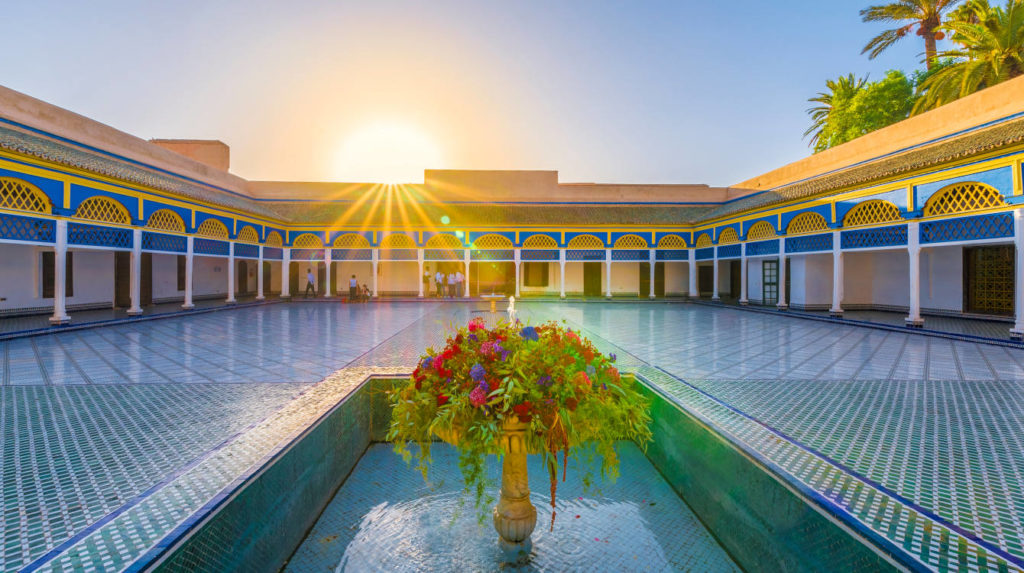
Religion
Islam is the official religion of Morocco and the majority of Moroccans are Muslims. This has a considerable effect on life in Marrakech and visitors are advised to respect the religious culture. Muslims are called to prayer 5 times a day – the call to prayer can be heard echoing through the city throughout the day, with the first call at dawn.
Visiting During Ramadan
Ramadan is the ninth month of the Islamic calendar, when Muslims fast from dawn to dusk. The exact dates of Ramadan vary from year to year, as they’re based around the lunar cycle.
While Ramadan traditions can vary across Morocco, here are some tips for visiting Marrakech during this holy month:
- Be respectful of those who are fasting; avoid eating, drinking or smoking in public during daylight hours.
- Many restaurants will be closed during the day but will open for iftar, the evening meal when the fast is broken. Reservations are recommended as spaces fill up.
- Nightlife is often livelier during Ramadan, especially after iftar. Head to Jemaa El-Fna square to enjoy street food, entertainment and festive vibes.
- Some historic and cultural sites may have limited daytime hours, so be sure to check opening times in advance.
- Dress a bit more conservatively than usual. Avoid showing too much skin and be mindful of wearing revealing clothing.
- Hotel swimming pools, spas or bars may be closed during daylight hours out of respect for those fasting.
What to Wear in Marrakech
While Marrakech is relatively relaxed regarding dress codes for tourists, following some basic guidelines out of respect for local customs can help you blend in better and avoid offence.
Despite the heat, avoid revealing clothing like shorts, mini skirts or tank tops, especially for women. Opt instead for loose, lightweight fabrics that provide coverage while keeping you cool and comfortable. Flowy trousers, long-sleeved tops, linen shirts and cotton dresses are perfect choices. Scarves can provide extra coverage when needed, protecting against both the sun and more conservative sensibilities. Remember to dress modestly when visiting religious sites like mosques, covering your legs and arms to respect local customs.
Read our blog on what to wear in Marrakech to ensure you travel with appropriate clothing.
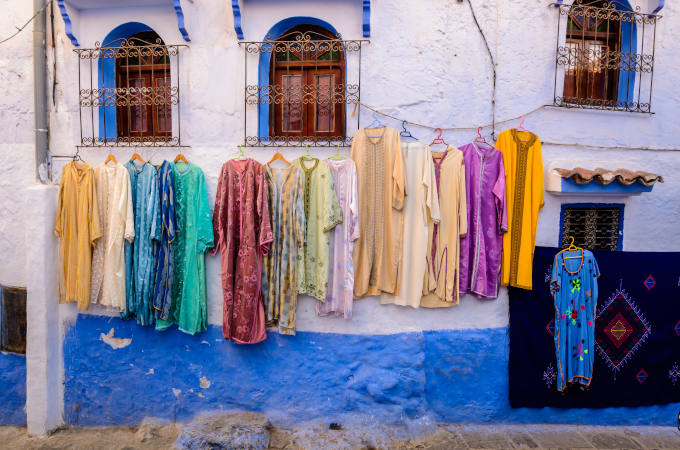
Where to Eat and Drink
Marrakech is a feast for the senses, especially for food lovers, with signature dishes seasoned with Moroccan spices and herbs from the overflowing souks. The food of Marrakech reflects its history as a city at the crossroads of trade and tourism. Savouring the city’s culinary treasures is an integral part of cultural exploration. Be sure to sample the fantastic cuisine in this area by visiting some of the best restaurants Marrakech has to offer during your stay.
Tagines, for example, are North Africa’s version of stew and are named after the cone-shaped clay pot in which they are slow-cooked. Tender meat, vegetables, dried fruits and aromatic spices like cumin, turmeric and cinnamon meld together into a mouth-watering meal. Other staples include couscous, fluffy semolina usually served with a protein and vegetables on top, and harira, a tomato-based soup thickened with chickpeas and lentils.
Although alcohol is readily available in Marrakech, this probably isn’t the right destination if you are looking for a booze-fuelled holiday. In general cafés don’t serve alcohol but most restaurants in Marrakech are licenced. Please ask us if you want more information on licensed eateries or see our guide on where to eat in Marrakech.
If you have any questions about the culture and traditions of Marrakech, or would like to book a stay at our Riad in the heart of the Medina, please give our friendly team a call and we’ll be delighted to help you.

